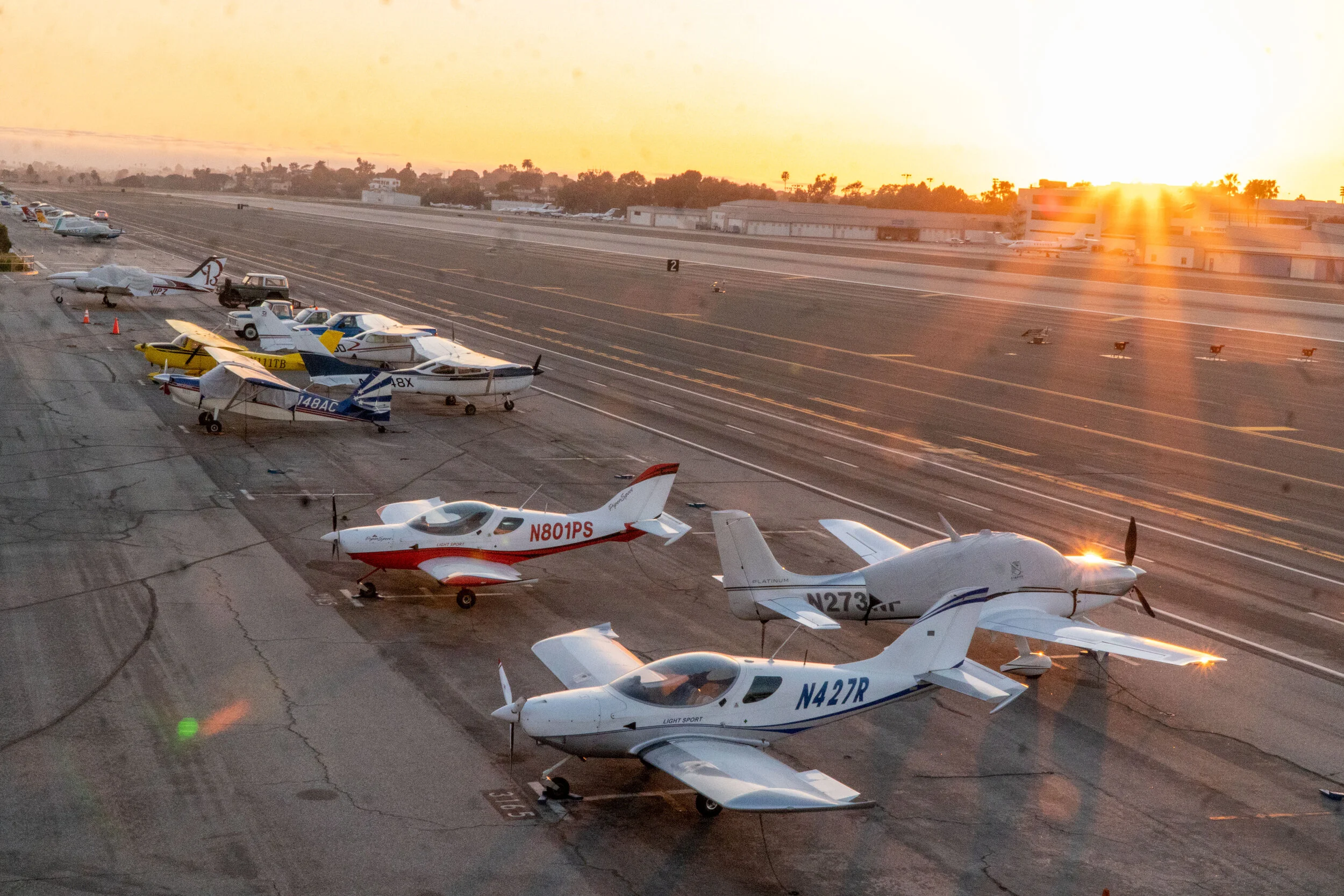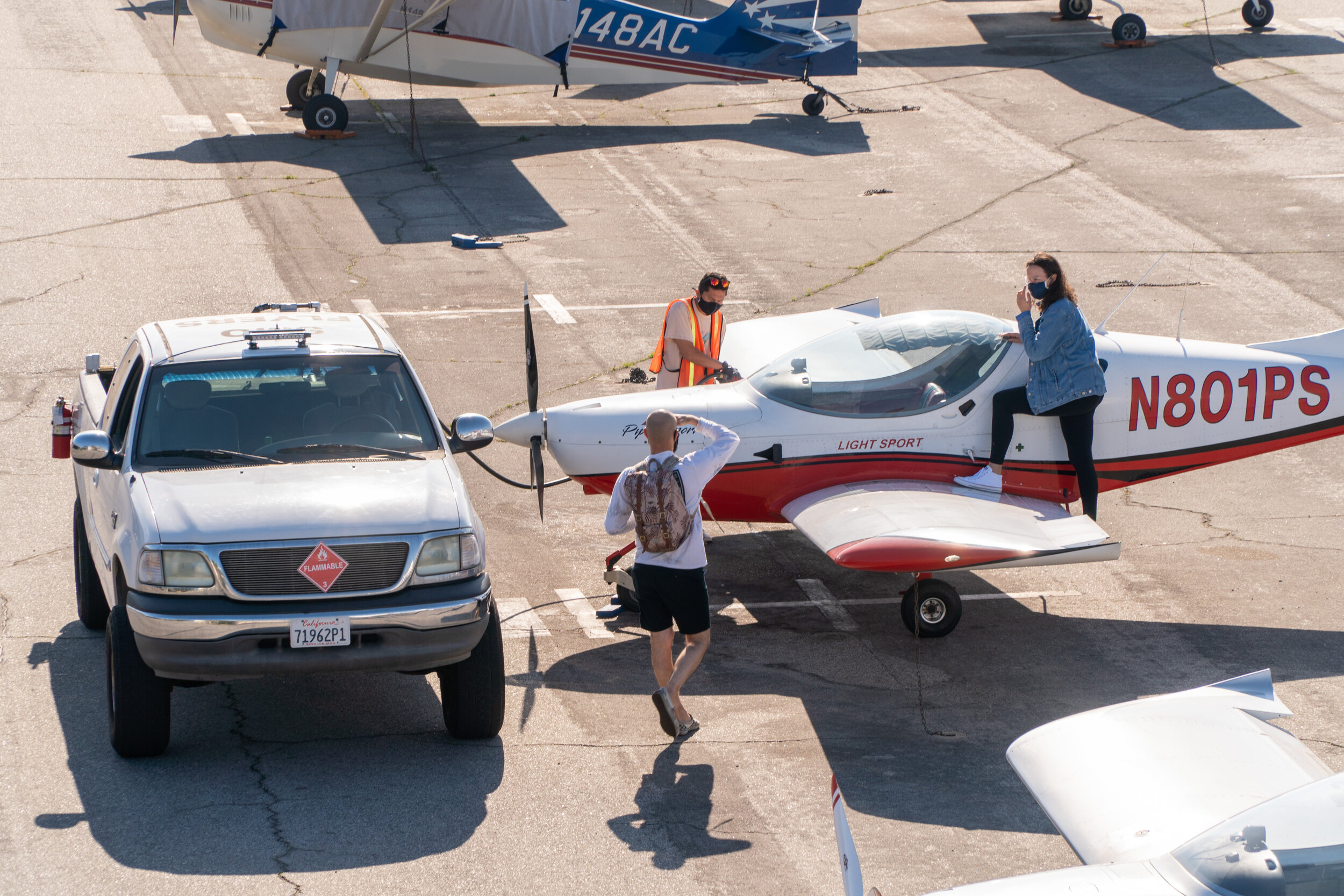Sun Sets on Santa Monica Airport
The sun sets over the Santa Monica Airport, on Wednesday, Feb. 24, 2021, in Santa Monica, Calif. (Brad Wilhite | The Corsair)
In 1919, the City of Santa Monica made history as World War I planes began to touch down on a grassy spot of Southern California deeming it an “unofficial landing site.” Today, life looks very different for that patch of grass we now know as the Santa Monica Airport (SMO). Since the early 1980s, the city of Santa Monica has been making arguments to close down the SMO — with some citing that the airport causes increased pollution and incessant noise. The city plans to shut down SMO as early as 2028.
For locals, the airport is the birthplace of future dreams. “I basically grew up on the observation deck. It's what started my love of aviation,” said Sammy Cockrell. The Santa Monica native learned to fly and is now employed at Proteus Air Services, a flight school based within SMO. “I learned to fly when I was 16. I’m 21 now and the idea of the airport closing is really depressing for me. I understand reducing jet traffic, but I completely disagree with shutting down the airport.”
According to the Federal Aviation Administration (FAA), the hours of flight are limited from 7 a.m. to 11 p.m. Monday through Friday, and 8 a.m. to 11 p.m. on Saturdays and Sundays. This means no aircraft shall start-up or depart, unless there is a bona fide emergency such as a medical situation or public safety emergency. With reduced hours, and planes emitting less pollution than ever, it calls attention to the true motive of the airport closure.
The Santa Monica Airport once was home to Douglas, an aircraft company famed for producing much of the war-era aircraft for the United States Government in both World War I and World War II.
By the 1970s, however, the City of Santa Monica, who'd owned the airport for almost a decade by then, developed an Airport Neighbors Forum. It consisted of local representatives from the neighborhoods surrounding SMO who initiated the noise ban for jets coming in and out of the airport.
The current recommended flight tracks, a service that involves tracking flights, aircrafts, and aircraft activity, were a direct result of the Airport Neighbors Forum. So is the maximum DB SENEL, which is the Sound Exposure Level the planes give off. It has since been lowered to 95 DB SENEL — similar to a motorcycle whizzing by.
Pilots get a full tank of gas at Santa Monica Airport Wednesday, Feb. 24, 2021 in Santa Monica, Calif. (Brad Wilhite | The Corsair)
The Santa Monica Airport is a staple of the city itself, with its rich history drawing in pilots and aviation enthusiasts from around the world. "[SMO is] essential infrastructure [for] the economy of the city. Once you tear it down, it's not coming back. They’re really not building new airports anymore,” Cockrell said.
In 2016, the FAA initiated an investigation into SMO for a series of actions being carried out by the city. The FAA cited the City of Santa Monica for planning to close the airport prematurely, and renting to others outside the airport that weren't using it for aviation.
Santa Monica Mayor Tony Vasquez is quoted in an LA Times article stating, “This is an overreach by the FAA, Our priority is putting the community first and exercising our rights as owner and operator of the airport. Despite the FAA’s efforts, we will not falter on our commitment to safeguard our community from the negative impacts of the airport until the courts make a final determination.”
Airport supporters contend that SMO is necessary relief for the more busy LAX, which handled 400 landings a day before the pandemic. With the City of Santa Monica completing the project to shorten the runway from 4,973 feet to a mere 3,500 feet, the closure of the historic airport is inevitable.
The City of Santa Monica has now proposed a park in SMO’s place. This interesting decision may stir local residents to ask whether that is the best use of the land. SMO will officially close its doors on Dec. 31, 2028 — to the relief of some, and grief for others. Regardless, it will end the 50-year-old debate for good.












